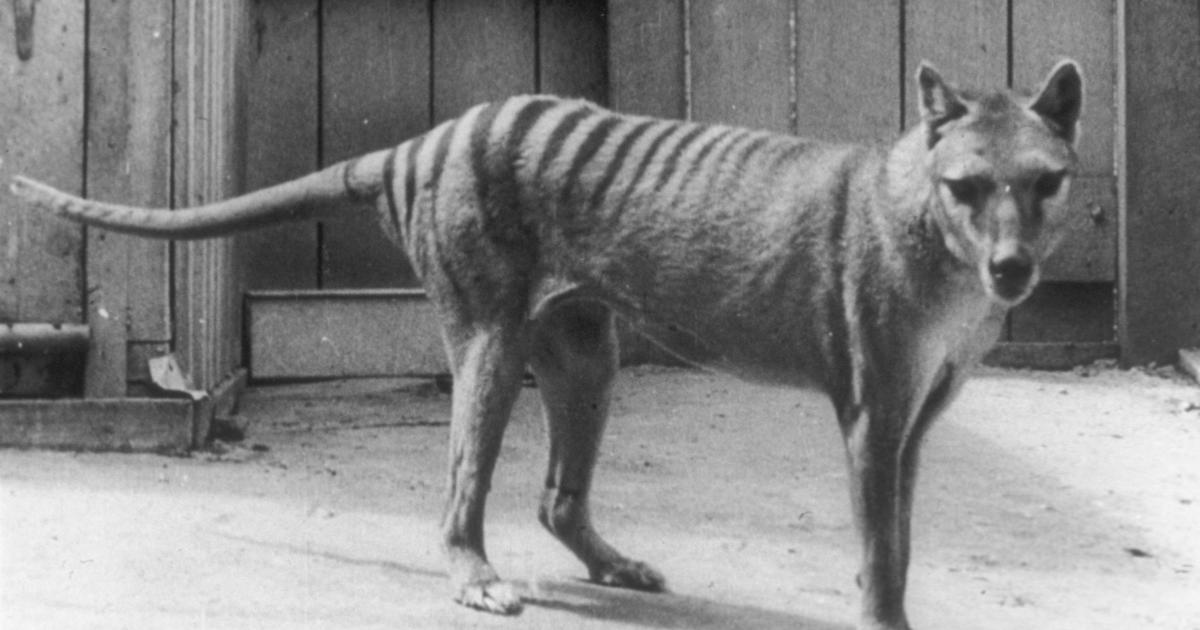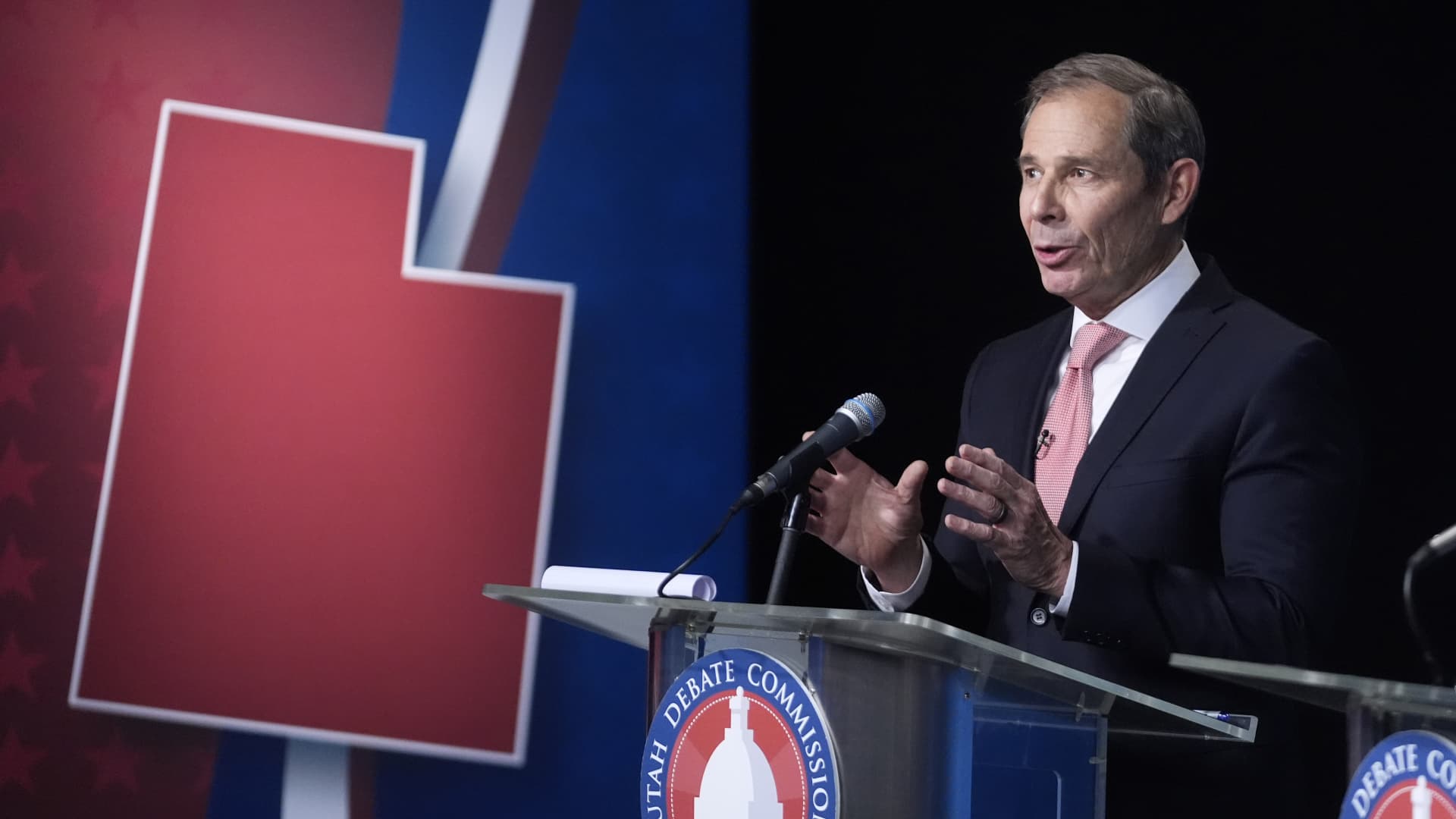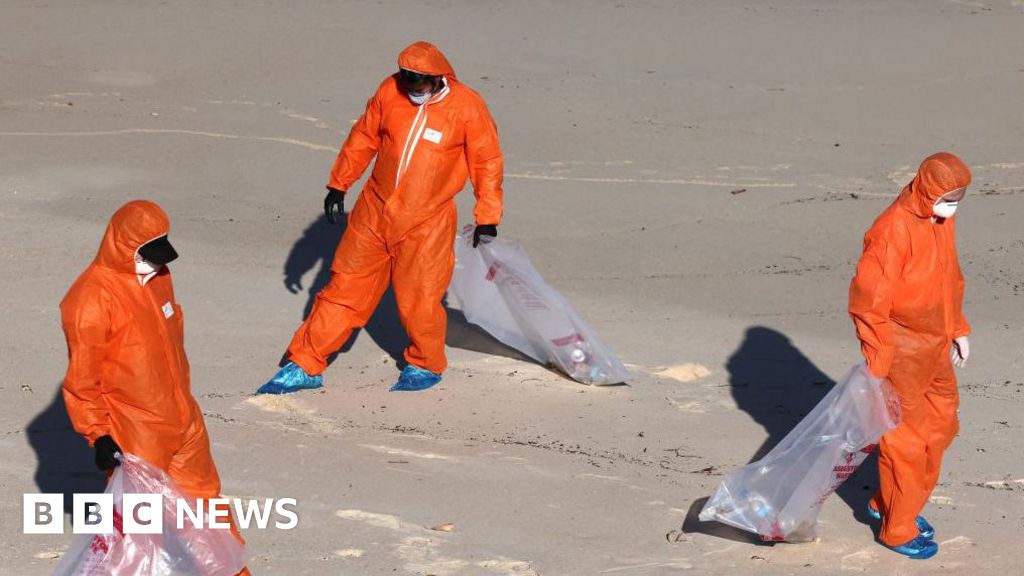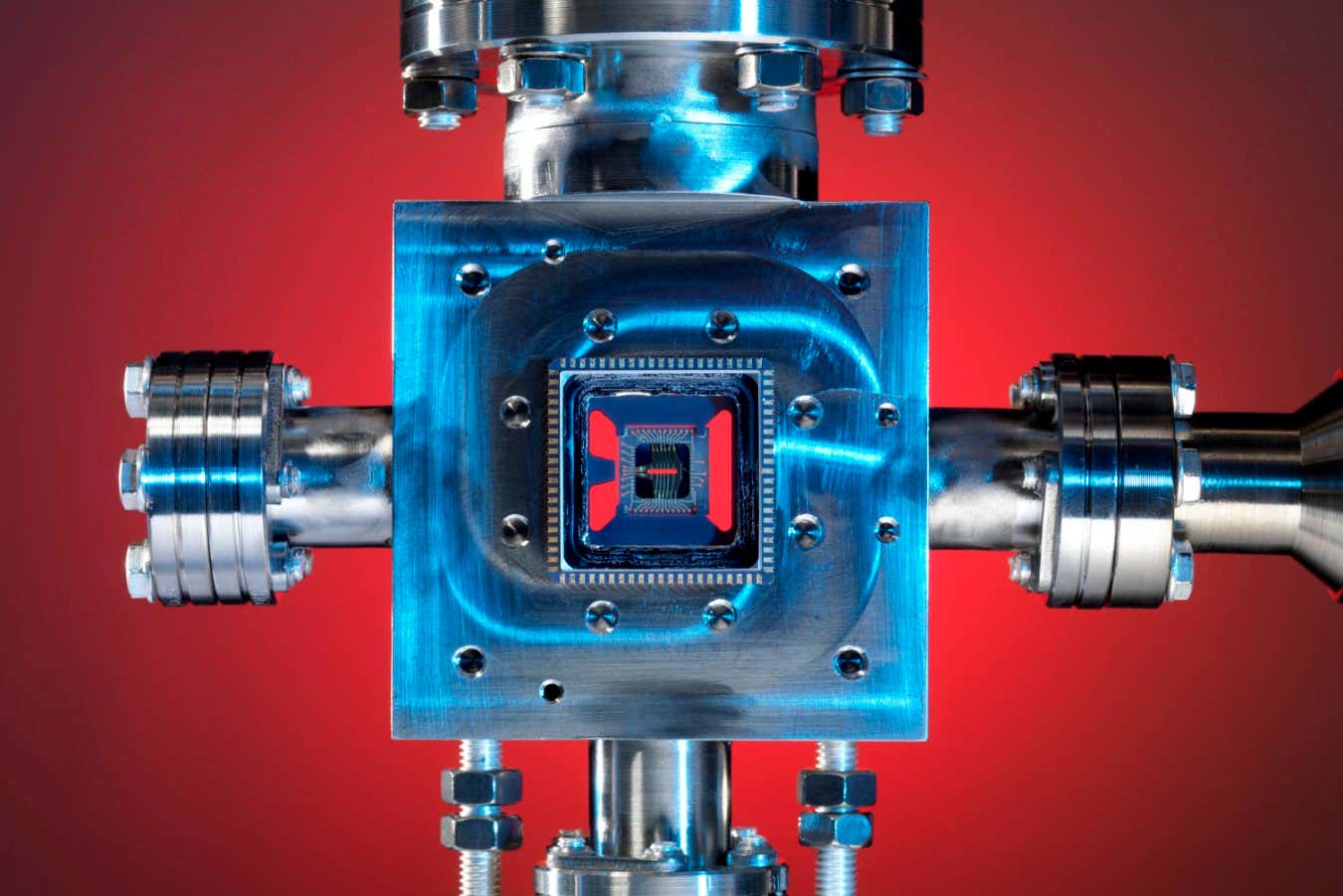Science & Environment
Crypto PAC Fairshake targets close House races as election nears end

“Make Bitcoin Great Again” hats displayed for sale at the Bitcoin 2024 conference in Nashville, Tennessee, US, on Saturday, July 27, 2024. Former US President Trump used to be a crypto critic but in recent weeks adopted a much friendlier stance alongside the sector’s emergence as an influential player in the 2024 presidential election through big donations to a political action committee.
Bloomberg | Bloomberg | Getty Images
With the 2024 election hitting its homestretch, the leading pro-crypto super PAC has funneled a big chunk of its final donations to close House races as part of an effort to push candidates favorable to the group’s agenda over the top.
Fairshake, which has been one of the top spenders across any industry this election cycle, doled out nearly $29 million in September, according to Federal Election commission data released to the public on Sunday. Of that sum, $20 million went to two affiliated PACs — $15 million to the Defend American Jobs PAC, a single-issue committee focused on cryptocurrency and blockchain policy that’s favored Republicans, and $5 million to Protect Progress, which has only supported Democrats.
The remaining $8.8 million spent by Fairshake last month mostly went to House races in New York, Nevada and California, according to FEC data compiled by crypto market and blockchain analyst James Delmore and verified by CNBC.
Several of those races are considered toss-ups by the Cook Political Report. Among the recipients were Southern California Republicans David G. Valadao and Michael Garcia, who are both in tights contests to keep their seats. They’ve received $1.3 million and $1 million, respectively.
“The Fairshake donations to the California candidates in toss-up districts are important not only to get pro-crypto candidates elected in House seats that could go either way, but also because a lot of crypto companies are still located in California,” Delmore said. “California needs all of the pro-crypto politicians they can get.”
Additionally, Fairshake gave more than $1.9 million to Rep. Patrick Ryan (D-NY), over $1.7 million to Rep. Steven Horsford (D-Nev.) and almost $1 million to Rep. Angela Dawn Craig (D-Minn.). The remaining cash went to a mix of candidates in Illinois, Colorado, Oregon, Iowa and Arkansas.
Of the House donations, $6.2 million went to Democratic candidates and $2.3 million to Republicans. In the September window, Protect Progress gave more than $10 million apiece to Democrats running for Senate in Arizona and Michigan.
For the 2024 cycle, political donations from or supporting the crypto industry reached around $190 million, with contributions coming from some of the biggest names in the sector. A report from Public Citizen in August found that crypto companies have accounted for nearly half of all donations made by corporations this election cycle.
Crypto groups have spent over $130 million in congressional races for this year’s election, including the primaries, according to FEC data.
Delmore told CNBC that donations to Fairshake have been tepid the last few months.
In September, the group added around $1.1 million, with $800,000 coming from crypto firm Consensys, which was sued by the SEC in June, and $1,000 from Moonsong Labs CEO Derek Yoo.
In total, Fairshake has raised more than $160 million and disbursed over $37 million to support House candidates and to run ads opposing Democrat Katie Porter, who lost in the California Senate primary. More than $84 million was transferred to Fairshake’s affiliate PACs.
WATCH: Crypto PAC money backs Utah Senate candidate and others across U.S.

Science & Environment
Scientists say they’ve made a breakthrough in efforts to bring back the extinct Tasmanian tiger

It’s been decades since Australia’s thylacine, known as the Tasmanian tiger, was declared extinct and scientists say they’ve made a breakthrough as they research ways to bring back the carnivore.
Colossal Biosciences in a Thursday press release said its reconstructed thylacine genome is about 99.9% complete, with 45 gaps that they’ll work to close through additional sequencing in the coming months. The company also isolated long RNA molecules from a 110-year-old preserved head, which was skinned and kept in ethanol.
“The thylacine samples used for our new reference genome are among the best preserved ancient specimens my team has worked with,” said Beth Shapiro, Colossal’s chief science officer and the director of the UCSC Paleogenomics Lab, where the samples were processed. “It’s rare to have a sample that allows you to push the envelope in ancient DNA methods to such an extent.”
Efforts to bring back the Tasmanian tiger
The preservation of a complete Tasmanian tiger head meant that scientists could study RNA samples from several important tissue areas, including the tongue, nasal cavity, brain and eye. It will allow researchers to determine what a thylacine could taste and smell, along with what type of vision it had and how its brain worked, according to Andrew Park, a member of Colossal’s Scientific Advisory Board and a researcher at the University of Melbourne’s TIGRR Lab.
“We’re getting closer every day to being able to place the thylacine back into the ecosystem – which of course is a major conservation benefit as well,” Pask said.
Pask, speaking with 60 Minutes earlier this year, said researchers were working with the closest living relative of the Tasmanian tiger — a small marsupial called the fat-tailed dunnart — as a way to bring the animal back.
“But that little dunnart is a ferocious carnivore, even though it’s very, very small,” Pask said. “And it’s a very good surrogate for us to be able to do all of this editing in.”
Scientists have been comparing the DNA of the dunnart and the thylacine, Pask told 60 Minutes. From there, it’s a matter of going in and editing the DNA to turn a fat-tailed dunnart cell into a thylacine cell.
Colossal Biosciences on Thursday said it had edited more than 300 unique genetic changes into a dunnart cell, making it “the most edited animal cell to date.”
“We are really pushing forward the frontier of de-extinction technologies,” Pask said, “from innovative ways of finding the regions of the genome driving evolution to novel methods to determine gene function. We are in the best place ever to rebuild this species using the most thorough genome resources and the best informed experiments to determine function.”
Efforts aiding the revival of the Tasmanian tiger are not confined to Australia. Last year, scientists recovered and sequenced RNA from a 130-year-old Tasmanian tiger specimen preserved at room temperature in Sweden’s Museum of Natural History.
How the Tasmanian tiger died off
Thylacines roamed Tasmania for thousands of years. Despite the Tasmanian tiger moniker, the carnivores were marsupials, like kangaroos, koalas and Tasmanian devils.
The local government in the late 1800s paid out bounties to hunters presenting carcasses of Tasmanian tigers because the animals had been eating farmers’ sheep, 60 Minutes previously reported. By the mid-1930s, the Tasmanian tiger population had dwindled to a single thylacine at the Beaumaris Zoo in Hobart, Tasmania’s capital. It died there in 1936.
Australia has similarly allowed the culling of Kangaroos, approving the deaths of thousands of kangaroos over the years. Officials have said the kangaroo population was eating through grassy habitats of endangered species. Officials have also warned in the past that there isn’t enough food available to sustain large kangaroo populations.
Science & Environment
Crypto’s $130 million election binge has boosted Utah’s John Curtis

U.S. Rep. John Curtis speaks during the Utah Senate primary debate for Republican contenders battling to win the seat of retiring U.S. Sen. Mitt Romney, June 10, 2024, in Salt Lake City.
Rick Bowmer | AP
SALT LAKE CITY — John Curtis, a Republican congressman from Utah, has become a favorite of the crypto industry in his bid to win the Senate seat held by the departing Mitt Romney. He took a somewhat oblong route through the telecommunications sector to get there.
At an event in Salt Lake City last week, Curtis told a few dozen crypto enthusiasts that he had a conversation a few years ago with some fellow House members about internet service providers and how to incentivize them to boost their offerings. The various lawmakers were throwing around different connection speeds — 50 megabits, 100 megabits — but when Curtis asked whether they’d ever run a speed test, he got puzzling responses.
“They looked at me like I was from another planet,” Curtis told the crowd at the Permissionless conference.
Curtis, 64, said he realized then that lawmakers needed to be smarter about regulations and actually understand the user experience. That’s particularly true in crypto, he said.
“This is so important to get government involved, because if they don’t understand what you’re doing, they’ll make really bad decisions,” the Provo-based congressman said, as the attendees nodded their head in unison. “The worst part of regulation is its unpredictability.”
Curtis’ attitude toward crypto is a big reason why digital coin enthusiasts have filled his coffers in his campaign against Democratic candidate Caroline Gleich, setting him up for what appears to be a landslide victory next month.
The Defend American Jobs PAC, a single-issue committee focused on cryptocurrency and blockchain policy, has contributed more than $1.9 million to Curtis’ campaign, according to Federal Election Commission data compiled by crypto market and blockchain analyst James Delmore and verified by CNBC. Additionally, the PAC spent more than $1.5 million to oppose Curtis’ Republican primary challenger, Trent Staggs.

Ben Lucas, Curtis’ campaign spokesman, declined an interview on behalf of the congressman. He sent a statement from Corey Newman, the chief of staff, saying that, “John has always been a strong supporter of the crypto industry as it will help Utah’s economy continue to grow and be a great place to create jobs.”
The sprawling and decentralized digital asset industry is backing Curtis and others who are publicly adopting a pro-crypto policy within their campaigns. The crypto industry accounts for nearly half of all donations made by corporations this election cycle as the sector outpaces both the big banks and oil. Of the 42 primary candidates that crypto-backed super PACs supported, they were successful in 36.
In total, crypto groups have spent over $130 million in congressional races for this year’s election, including the primaries, according to FEC data.
Crypto picks its targets
Venture firm Andreessen Horowitz found in its recent State of Crypto report that more than 40 million Americans hold crypto, a group that’s young and bipartisan. The report said 51% of them indicated they’re likely to throw their weight behind crypto-friendly candidates.
Curtis says the best thing the industry can do is police itself, and then come to lawmakers with the right kind of guardrails, striking a balance of safety and security without excessive regulation.
Three crypto PACs, which are primarily backed by Coinbase, Ripple, and Andreessen Horowitz, have been targeting competitive Senate and House races across the U.S.
Protect Progress has given more than $10 million apiece to Senate candidates in Arizona and Michigan. In Arizona, the group favors Democrat Ruben Gallego, who is vying for the seat being vacated by Kyrsten Sinema. In Michigan, the preferred choice is Elissa Slotkin, who is currently a Democratic House member.
U.S. Sen. Elizabeth Warren (D-MA) becomes emotional as the crowd cheers on Day 4 of the Democratic National Convention (DNC) at the United Center in Chicago, Illinois, U.S., August 22, 2024.
Kevin Wurm | Reuters
The Republican candidates in Indiana and West Virginia have each received more than $3 million from Defend American Jobs. In Massachusetts, a super PAC for Republican John Deaton has pulled in $2.6 million from the crypto industry. Deaton, however, is polling way behind Democratic Sen. Elizabeth Warren, who is one of the crypto sector’s top antagonists in Washington.
“Elizabeth Warren is not going to lose her election in Massachusetts, so the industry can’t get rid of Warren,” said Delmore. “But they can at least help to vote out candidates who are allied with her against the crypto industry.”
One big target is Ohio Democratic Sen. Sherrod Brown, the chair of the banking committee. Some $40 million of crypto money has been directed at defeating Brown, and one PAC has paid for five ads designed to boost awareness of his Republican rival, Bernie Moreno, a blockchain entrepreneur. The race is currently very close and is crucial in determining which party will control the Senate.
In House races, around $3.6 million in crypto PAC money has gone to candidates in Arizona, $5.4 million in New York, more than $4.8 million in Virginia, and $5.7 million in California, with half of that spend going to Republican Michelle Park Steel.
Crypto PAC money has been party agnostic and not just focused on battleground districts. The focus is on supporting lawmakers who embrace regulation that favors the technology rather than getting in its way.
“When we talk about digital assets, when we talk about crypto, that is not about Republicans and Democrats,” said House Majority Whip Rep. Tom Emmer (R-Minn.), at Permissionless. “That’s about Americans, that’s about decentralization of a system that has been, literally, consolidated at the top.”
WATCH: Trump family given $337.5 million token stake in new crypto project

Science & Environment
What will space exploration be like in 50 years?

Day trips to the Moon, living on Mars, space elevators… when it comes to the future of space exploration, some possibilities might be closer than we think!
Made by BBC Ideas in partnership with the Royal Society, external
Animated by Jess Mountfield, narrated by Dr Becky Smethurst at the University of Oxford
Science & Environment
Sydney reopens beaches after tar ball scare

 AFP
AFPBeaches in the Australian city of Sydney have reopened for swimmers after being closed earlier this week when thousands of mysterious black tar-like balls washed ashore, prompting health concerns.
Officials say tests found the balls to be formed from chemicals similar to those in cosmetics and cleaning products but it is still unclear where they came from.
Eight beaches including Bondi – the city’s most famous – were closed and a massive clean-up ordered amid fears the black deposits were toxic.
New South Wales’s Environment Minister, Penny Sharpe, said investigations were continuing to establish the source of the pollution and who was responsible.
The state’s maritime authority said the balls were not highly toxic to humans but should not be touched or picked up.
“Based on advice from the Environment Protection Authority, we can now confirm the balls are made up of fatty acids, chemicals consistent with those found in cleaning and cosmetic products, mixed with some fuel oil,” said New South Wales Maritime Executive Director Mark Hutchings.
 EPA
EPAThe New South Wales Environment Protection Authority (EPA) said laboratory testing was continuing, to try to determine where the balls came from, Reuters news agency reports.
“It is still somewhat of a mystery and may take a few more days to determine origin,” said EPA Executive Director Stephen Beaman.
The tar balls were “not harmful when on the ground but should not be touched or picked up”, Mr Hutchings was quoted as saying by Australian broadcaster ABC.
“If you see these balls, report them to a lifeguard. If you or your family accidentally touches one, wash your hands with soap and water or baby oil.”
Science & Environment
Indestructible quantum rifts can exist in two places at once


An ion trap helped create a quantum defect in two places at once
ANDREW BROOKES, NATIONAL PHYSICAL LABORATORY/SCIENCE PHOTO LIBRARY
Exotic quantum rifts have been created with charged atoms, and they exist in a superposition of being in two places at once. This is a first step towards better understanding the behaviour of such quantum defects in everything from materials to an entire universe.
Defects are ubiquitous – think of tears in textiles or cloudy imperfections in shiny crystals – but in quantum systems, they can have the extra property of being topological. That means the overall structure of the…
Science & Environment
BlackRock’s ETF chief says 75% of its bitcoin buyers are crypto fans new to Wall Street

Marquee at the main entrance to BlackRock headquarters building in Manhattan.
Erik Mcgregor | Lightrocket | Getty Images
SALT LAKE CITY — A year ago, Samara Cohen believed there was so much pent-up demand for bitcoin that she and her team at BlackRock launched one of the first-ever spot bitcoin exchange-traded products in the U.S. Now investors are flocking in, and a lot of them are crypto enthusiasts who are new to Wall Street.
Cohen, who heads up the asset manager’s exchange-traded funds and index investments as chief investment officer, told CNBC that BlackRock now sees the demand was for a better way to access bitcoin. “It was for the ETF wrapper,” she told CNBC on stage at the Permissionless Conference in Utah.
The total market cap of all eleven spot bitcoin ETFs now tops $63 billion, with total flows of nearly $20 billion. In the last five trading days alone, spot bitcoin ETFs have seen net inflows of more than $2.1 billion, with BlackRock accounting for half of those sales.
The spike in trading volume comes as bitcoin hit its highest level since July this week, trading above $68,300. Bitcoin ended the third quarter up around 140% from the same quarter a year ago, outpacing the S&P 500, as these spot token funds and the crypto market cap move higher in lock-step. Crypto-aligned stock Coinbase closed up about 24% this week, its best week since February.
Cohen told CNBC that part of the strategy for attracting customers to its funds was teaching crypto investors about the benefits of exchange-traded products (ETPs).
13F filings, which offer quarterly reads on equity positions taken by large investors, show that 80% of the buyers of these new spot bitcoin products in the U.S. are direct investors. Of the 80% of direct investors, Cohen told CNBC that 75% had never before owned an iShare, one of the best-known and largest ETF providers on the planet.
“So we went into this journey with the expectation that we needed to educate ETF investors on crypto and on bitcoin specifically,” said Cohen. “As it turns out, we have done a lot of education of crypto investors on the benefits of the ETP wrapper.”
Before the U.S. Securities and Exchange Commission green-lit spot bitcoin funds in January, investors had a few ways to buy and custody cryptocurrencies. A centralized exchange like Coinbase was among the most user-friendly options for U.S investors. But the blockbuster debut of bitcoin ETPs has laid bare to Cohen and others across Wall Street, that crypto exchanges weren’t giving digital asset investors everything they needed.

BlackRock’s IBIT vs. bitcoin YTD
It helps that the U.S. is a huge market for digital assets. New data from Chainalysis shows that North America remains the biggest crypto market globally, accounting for nearly 23% of all crypto trading volume. The blockchain analytics platform estimates that between July 2023 and July 2024, there was $1.3 trillion in on-chain value received.
Venture firm a16z found in its recently released State of Crypto report that more than 40 million Americans hold crypto.
So far, adoption has mostly been through wealth management clients asking advisors to add new spot crypto products to their portfolio.

In August, Morgan Stanley was the first big bank to allow its 15,000 financial advisors to pitch bitcoin ETFs from BlackRock and Fidelity to clients with a net worth over $1.5 million. Other firms are still performing in-house due diligence before allowing their armies of FAs to start actively pitching the funds.
“Wealth manager allocators have not been allocating,” VanEck CEO Jan van Eck told CNBC in Utah. “I mean, they’re barely even warming up.”
Van Eck drew parallels to the European market, where the company has 12 token-based products trading in Europe.
“It’s exactly what we see in Europe,” he said. “Very few private banks have really approved investment in bitcoin or ethereum or anything else in a major way.” Van Eck said his company has about $2 billion in its European crypto ETPs, and that a lot of the volume is from individual investors.
Wall Street needs rules from lawmakers on Capitol Hill before it gets more comfortable with crypto.
ETFs create transparency
Cohen thinks that in a lot of ways, ETFs and blockchain technology are solving for similar things.
“ETFs have been a decentralizing force in TradFi markets that have brought a lot more access and transparency, and importantly, really accelerated in growth during the post crisis 2008, 2009 period,” said Cohen, referring to traditional finance markets.
“I find it incredibly meaningful to look at the fact that the bitcoin whitepaper was published on October 31, 2008, and then you have the G20 leaders from around the world meeting to discuss the aftermath of the financial crisis and how do you create more transparency through public reporting,” Cohen continued.
BlackRock took on less risk by using counterparty clearing and multilateral trading. In TradFi markets, those moves created huge tailwinds for ETFs.
“Then at the same time, DeFi is becoming a reality over the intervening 15 years,” she said.
“Was this a win for Bitcoin? Was this a win for ETPs? To me, the answer is: It’s a win for investors, to the extent we can effectively marry these ecosystems which are solving for the same goals.”

-

 Science & Environment1 month ago
Science & Environment1 month agoHyperelastic gel is one of the stretchiest materials known to science
-

 Technology4 weeks ago
Technology4 weeks agoIs sharing your smartphone PIN part of a healthy relationship?
-

 Science & Environment1 month ago
Science & Environment1 month ago‘Running of the bulls’ festival crowds move like charged particles
-

 Science & Environment1 month ago
Science & Environment1 month agoHow to unsnarl a tangle of threads, according to physics
-

 Science & Environment1 month ago
Science & Environment1 month agoMaxwell’s demon charges quantum batteries inside of a quantum computer
-

 Technology1 month ago
Technology1 month agoWould-be reality TV contestants ‘not looking real’
-

 Science & Environment4 weeks ago
Science & Environment4 weeks agoX-rays reveal half-billion-year-old insect ancestor
-

 Science & Environment1 month ago
Science & Environment1 month agoLiquid crystals could improve quantum communication devices
-

 Science & Environment1 month ago
Science & Environment1 month agoSunlight-trapping device can generate temperatures over 1000°C
-

 Science & Environment1 month ago
Science & Environment1 month agoQuantum ‘supersolid’ matter stirred using magnets
-

 Womens Workouts4 weeks ago
Womens Workouts4 weeks ago3 Day Full Body Women’s Dumbbell Only Workout
-

 Science & Environment1 month ago
Science & Environment1 month agoWhy this is a golden age for life to thrive across the universe
-

 Science & Environment1 month ago
Science & Environment1 month agoLaser helps turn an electron into a coil of mass and charge
-

 Science & Environment1 month ago
Science & Environment1 month agoQuantum forces used to automatically assemble tiny device
-

 Science & Environment1 month ago
Science & Environment1 month agoNerve fibres in the brain could generate quantum entanglement
-

 Science & Environment1 month ago
Science & Environment1 month agoHow to wrap your mind around the real multiverse
-

 Science & Environment1 month ago
Science & Environment1 month agoA slight curve helps rocks make the biggest splash
-

 Technology3 weeks ago
Technology3 weeks agoUkraine is using AI to manage the removal of Russian landmines
-

 TV3 weeks ago
TV3 weeks agoসারাদেশে দিনব্যাপী বৃষ্টির পূর্বাভাস; সমুদ্রবন্দরে ৩ নম্বর সংকেত | Weather Today | Jamuna TV
-

 Science & Environment1 month ago
Science & Environment1 month agoITER: Is the world’s biggest fusion experiment dead after new delay to 2035?
-

 Science & Environment1 month ago
Science & Environment1 month agoA new kind of experiment at the Large Hadron Collider could unravel quantum reality
-

 News1 month ago
News1 month ago▶️ Hamas in the West Bank: Rising Support and Deadly Attacks You Might Not Know About
-
News1 month ago
the pick of new debut fiction
-

 Science & Environment1 month ago
Science & Environment1 month agoTime travel sci-fi novel is a rip-roaringly good thought experiment
-

 News1 month ago
News1 month ago▶️ Media Bias: How They Spin Attack on Hezbollah and Ignore the Reality
-

 Science & Environment1 month ago
Science & Environment1 month agoNuclear fusion experiment overcomes two key operating hurdles
-

 News4 weeks ago
News4 weeks agoOur millionaire neighbour blocks us from using public footpath & screams at us in street.. it’s like living in a WARZONE – WordupNews
-

 Technology4 weeks ago
Technology4 weeks agoWhy Machines Learn: A clever primer makes sense of what makes AI possible
-
Business3 weeks ago
DoJ accuses Donald Trump of ‘private criminal effort’ to overturn 2020 election
-

 Business2 weeks ago
Business2 weeks agoWhen to tip and when not to tip
-

 Technology3 weeks ago
Technology3 weeks agoMicrophone made of atom-thick graphene could be used in smartphones
-

 MMA3 weeks ago
MMA3 weeks agoJulianna Peña trashes Raquel Pennington’s behavior as champ
-

 News2 weeks ago
News2 weeks agoNavigating the News Void: Opportunities for Revitalization
-

 News2 weeks ago
News2 weeks agoMassive blasts in Beirut after renewed Israeli air strikes
-

 Science & Environment1 month ago
Science & Environment1 month agoPhysicists have worked out how to melt any material
-

 Science & Environment1 month ago
Science & Environment1 month agoPhysicists are grappling with their own reproducibility crisis
-

 Sport3 weeks ago
Sport3 weeks agoWorld’s sexiest referee Claudia Romani shows off incredible figure in animal print bikini on South Beach
-

 Technology3 weeks ago
Technology3 weeks agoThis AI video generator can melt, crush, blow up, or turn anything into cake
-

 Technology2 weeks ago
Technology2 weeks agoSamsung Passkeys will work with Samsung’s smart home devices
-

 Sport2 weeks ago
Sport2 weeks agoWales fall to second loss of WXV against Italy
-

 Sport2 weeks ago
Sport2 weeks agoCoco Gauff stages superb comeback to reach China Open final
-

 News2 weeks ago
News2 weeks ago▶ Hamas Spent $1B on Tunnels Instead of Investing in a Future for Gaza’s People
-

 News2 weeks ago
News2 weeks agoHeavy strikes shake Beirut as Israel expands Lebanon campaign
-

 TV2 weeks ago
TV2 weeks agoLove Island star sparks feud rumours as one Islander is missing from glam girls’ night
-

 Football3 weeks ago
Football3 weeks agoRangers & Celtic ready for first SWPL derby showdown
-

 Sport3 weeks ago
Sport3 weeks agoSturm Graz: How Austrians ended Red Bull’s title dominance
-

 News2 weeks ago
News2 weeks agoHeartbreaking end to search as body of influencer, 27, found after yacht party shipwreck on ‘Devil’s Throat’ coastline
-

 Sport2 weeks ago
Sport2 weeks agoBoxing: World champion Nick Ball set for Liverpool homecoming against Ronny Rios
-
Business3 weeks ago
Eurosceptic Andrej Babiš eyes return to power in Czech Republic
-

 News1 month ago
News1 month agoYou’re a Hypocrite, And So Am I
-

 Sport1 month ago
Sport1 month agoJoshua vs Dubois: Chris Eubank Jr says ‘AJ’ could beat Tyson Fury and any other heavyweight in the world
-

 TV3 weeks ago
TV3 weeks agoPhillip Schofield accidentally sets his camp on FIRE after using emergency radio to Channel 5 crew
-

 MMA2 weeks ago
MMA2 weeks agoPereira vs. Rountree prediction: Champ chases legend status
-

 TV2 weeks ago
TV2 weeks agoMaayavi (මායාවී) | Episode 23 | 02nd October 2024 | Sirasa TV
-

 Technology3 weeks ago
Technology3 weeks agoUniversity examiners fail to spot ChatGPT answers in real-world test
-

 MMA3 weeks ago
MMA3 weeks agoDana White’s Contender Series 74 recap, analysis, winner grades
-

 Technology3 weeks ago
Technology3 weeks agoAmazon’s Ring just doubled the price of its alarm monitoring service for grandfathered customers
-

 News2 weeks ago
News2 weeks agoGerman Car Company Declares Bankruptcy – 200 Employees Lose Their Jobs
-

 Technology2 weeks ago
Technology2 weeks agoTexas is suing TikTok for allegedly violating its new child privacy law
-

 News2 weeks ago
News2 weeks agoHull KR 10-8 Warrington Wolves – Robins reach first Super League Grand Final
-

 Money2 weeks ago
Money2 weeks agoWhy thousands of pensioners WON’T see State Pension rise by full £460 next year
-

 MMA2 weeks ago
MMA2 weeks ago‘Uncrowned queen’ Kayla Harrison tastes blood, wants UFC title run
-

 Science & Environment1 month ago
Science & Environment1 month agoCaroline Ellison aims to duck prison sentence for role in FTX collapse
-

 Science & Environment1 month ago
Science & Environment1 month agoRethinking space and time could let us do away with dark matter
-

 Science & Environment1 month ago
Science & Environment1 month agoA tale of two mysteries: ghostly neutrinos and the proton decay puzzle
-
News1 month ago
The Project Censored Newsletter – May 2024
-

 Technology4 weeks ago
Technology4 weeks agoMeta has a major opportunity to win the AI hardware race
-

 Technology3 weeks ago
Technology3 weeks agoQuantum computers may work better when they ignore causality
-

 News1 month ago
News1 month agoNew investigation ordered into ‘doorstep murder’ of Alistair Wilson
-

 Health & fitness1 month ago
Health & fitness1 month agoThe secret to a six pack – and how to keep your washboard abs in 2022
-

 Sport3 weeks ago
Sport3 weeks agoWatch UFC star deliver ‘one of the most brutal knockouts ever’ that left opponent laid spark out on the canvas
-
Business3 weeks ago
Bank of England warns of ‘future stress’ from hedge fund bets against US Treasuries
-

 Technology2 weeks ago
Technology2 weeks agoPopular financial newsletter claims Roblox enables child sexual abuse
-

 Sport2 weeks ago
Sport2 weeks agoMan City ask for Premier League season to be DELAYED as Pep Guardiola escalates fixture pile-up row
-

 News2 weeks ago
News2 weeks agoFamily plans to honor hurricane victim using logs from fallen tree that killed him
-

 MMA2 weeks ago
MMA2 weeks agoPereira vs. Rountree preview show live stream
-

 Technology2 weeks ago
Technology2 weeks agoA very underrated horror movie sequel is streaming on Max
-

 Technology2 weeks ago
Technology2 weeks agoThe best shows on Max (formerly HBO Max) right now
-

 News2 weeks ago
News2 weeks agoBalancing India and China Is the Challenge for Sri Lanka’s Dissanayake
-

 Technology3 weeks ago
Technology3 weeks agoEpic Games CEO Tim Sweeney renews blast at ‘gatekeeper’ platform owners
-

 Business3 weeks ago
Business3 weeks agoChancellor Rachel Reeves says she needs to raise £20bn. How might she do it?
-

 Football3 weeks ago
Football3 weeks agoSimo Valakari: New St Johnstone boss says Scotland special in his heart
-

 MMA3 weeks ago
MMA3 weeks agoAlex Pereira faces ‘trap game’ vs. Khalil Rountree
-

 Technology3 weeks ago
Technology3 weeks agoMusk faces SEC questions over X takeover
-
Business2 weeks ago
Sterling slides after Bailey says BoE could be ‘a bit more aggressive’ on rates
-

 Politics2 weeks ago
Politics2 weeks agoHochul’s careful conversations
-

 Technology2 weeks ago
Technology2 weeks agoApple iPhone 16 Plus vs Samsung Galaxy S24+
-

 News2 weeks ago
News2 weeks agoReach CEO Jim Mullen: If government advertises with us, we’ll employ more reporters
-

 Technology2 weeks ago
Technology2 weeks agoUlefone Armor Pad 4 Ultra is now available, at a discount
-

 Football1 month ago
Football1 month agoMike Williamson: Carlisle United appoint MK Dons boss as head coach
-
Politics1 month ago
UK consumer confidence falls sharply amid fears of ‘painful’ budget | Economics
-

 Servers computers4 weeks ago
Servers computers4 weeks agoWhat are the benefits of Blade servers compared to rack servers?
-

 Technology3 weeks ago
Technology3 weeks agoArtificial flavours released by cooking aim to improve lab-grown meat
-
Business3 weeks ago
Should London’s tax exiles head for Spain, Italy . . . or Wales?
-

 MMA3 weeks ago
MMA3 weeks agoConor McGregor challenges ‘woeful’ Belal Muhammad, tells Ilia Topuria it’s ‘on sight’
-

 Technology4 weeks ago
Technology4 weeks agoRobo-tuna reveals how foldable fins help the speedy fish manoeuvre
-
Politics3 weeks ago
Robert Jenrick vows to cut aid to countries that do not take back refused asylum seekers | Robert Jenrick
-

 Technology3 weeks ago
Technology3 weeks ago‘From a toaster to a server’: UK startup promises 5x ‘speed up without changing a line of code’ as it plans to take on Nvidia, AMD in the generative AI battlefield
-

 Football3 weeks ago
Football3 weeks agoFootball Focus: Martin Keown on Liverpool’s Alisson Becker
-

 MMA3 weeks ago
MMA3 weeks agoHow to watch Salt Lake City title fights, lineup, odds, more


You must be logged in to post a comment Login